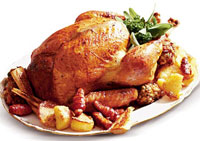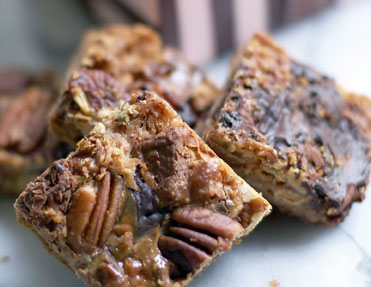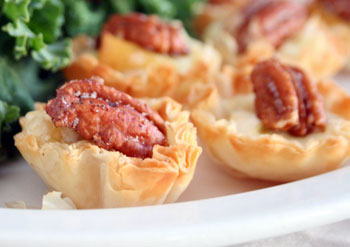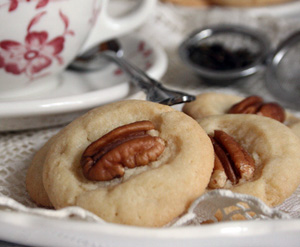 Ah, so it begins.
Ah, so it begins.
From my cousin:
“Well, so far, there will be about thirty of us. We should talk about
the menu and see what we want everyone to bring. We’ll need two
turkeys. Kevin says he wants to deep fry one.”
This, from my cousin Leland in Kansas where we will meet for
Thanksgiving. I will happily fly to Tulsa from Los Angeles, then drive
on cruise control 120 miles to the small town of Parsons for
Thanksgiving dinner at his big blue Victorian home with a host of
cousins, grandchildren, stray local teen-agers and two uncles well into
their 80s. (One will bring a cream pie and the other, green jello.)
Once we settle where the out-of-towners sleep we will find ourselves
smack in this small town of 13,000 in the middle of the country, the
grocery shopping dependent on a Wal Mart just outside the city limits
where there is never a shortage of iceberg lettuce, year round. (A
side note: I felt slapped down, yet hopeful to discover a small plastic
container of basil buried among the radishes when last there.)

 My house has been exploding with cookies lately. It’s not a bad thing and I’m certainly not complaining. I love this time of year when baking takes priority over dinner. “Here kids, have a few cookies and a glass of milk, we’ll call it good for a meal.” Just kidding…sort of.
My house has been exploding with cookies lately. It’s not a bad thing and I’m certainly not complaining. I love this time of year when baking takes priority over dinner. “Here kids, have a few cookies and a glass of milk, we’ll call it good for a meal.” Just kidding…sort of. I have been making dream bars since 1990. It is a recipe I discovered in my Rose Levy Beranbaum
I have been making dream bars since 1990. It is a recipe I discovered in my Rose Levy Beranbaum  Crunchy. Flaky. Gooey. Sweet. Tart. Salty. Delicious. And, as if that weren’t enough to get you completely hooked, I must add one more thing. Super easy.
Crunchy. Flaky. Gooey. Sweet. Tart. Salty. Delicious. And, as if that weren’t enough to get you completely hooked, I must add one more thing. Super easy. Butter season. It's here. The inside of the door on my freezer holds several pounds of Land O Lakes butter. Many more of the 1-pound boxes are stacked on the shelves in my refrigerator. My holiday baking has begun.
Butter season. It's here. The inside of the door on my freezer holds several pounds of Land O Lakes butter. Many more of the 1-pound boxes are stacked on the shelves in my refrigerator. My holiday baking has begun.